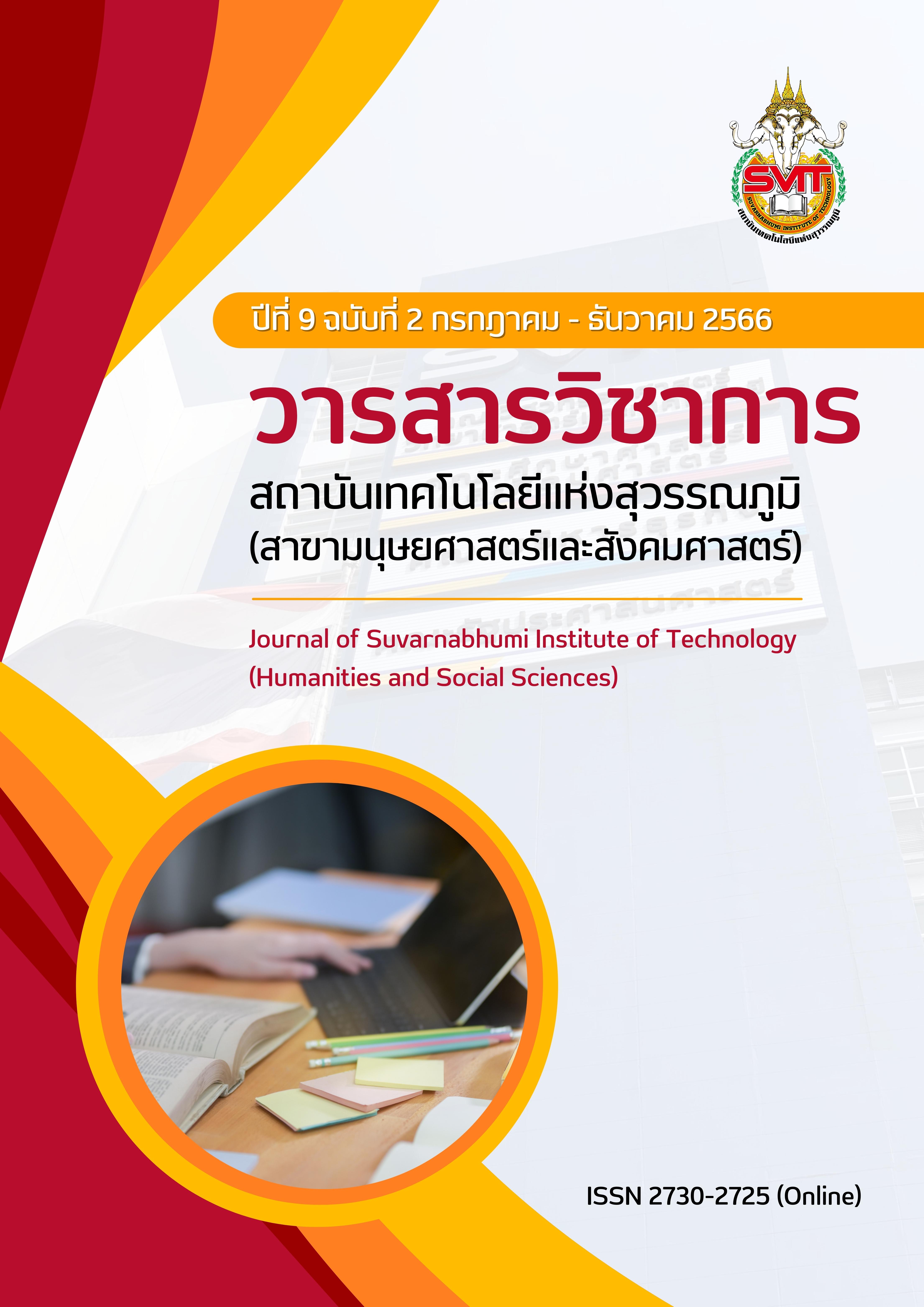OF ACTIVE LEARNING MA THE EFFECT OF ACTIVE LEARNING MANAGEMENT ON LEARNING ACHIEVEMENT IN THE CIVICS COURSE OF PRATHOMSUKSA 3 STUDENTS AT BANHUAI RONGNOK SCHOOL UNDER OF THE PHRAE PRIMARY EDUCATIONAL SERVICE AREA OFFICE 1
Keywords:
Active Learning Management, Achievement, Ban Huai Rong Nok SchoolAbstract
The purposes of this research were to study 1) compare the learning achievement before and after learning in the civics course of Prathomsuksa 3 students and 2) and the satisfaction toward active learning of Prathomsuksa 3 students at BanHuai RongNok School under the Phrae Primary Educational Service Area Office 1. The samples were 30 students in the second semester, the academic year 2022, obtained by cluster random sampling. The research instruments were 6 lesson plans based on active learning, an achievement test, a learning behavior observation form and a satisfaction toward learning questionnaire. The statistics employed for data analysis were mean, standard deviation, and t-test.
The results were as follows: 1) A proactive approach to learning management that supports philosophy, theory and concepts of learning management that can be apply in real active learning ; A 5-components of instruction at model consisted of; 1) the principles of the model 2) the objectives of the model 3) the learning management process 4) the learning content, 5) measurement and evaluation of learning. The model revealed overall efficacy at the highest level and The learners revealed learning achievement for the civics course of Prathomsuksa 3 students after learning at the percentage of 70 and revealed the statistical significance at the .05 level. The students’ satisfaction toward based on active learning was at a high level
References
ทิศนา แขมมณี. (2557). ศาสตร์การจัดการเรียนรู้องค์ความรู้เพื่อการจัดกระบวนการเรียนรู้ที่มีประสิทธิภาพ (พิมพ์ครั้งที่ 18). กรุงเทพฯ: ด่านสุทธาการพิมพ์.
พรรณี ลีกิจวัฒนะ. (2558). วิธีการวิจัยทางการศึกษา. พิมพ์ครั้งที่ (10). คณะครุศาสตร์อุตสาหกรรมและ
พิมพันธ์ เดชะคุปต์ และพเยาว์ ยินดีสุข. (2557). สอนเขียนแผนบูรณาการ บนฐานเด็กเป็นสำคัญ.กรุงเทพฯ: สำนักพิมพ์แห่งจุฬาลงกรณ์มหาวิทยาลัย.
ไพฑูรย์ สินลารัตน์ และคณะ. (2550). การพัฒนารูปแบบการจัดการเรียนการสอนแบบ CRP. คณะครุศาสตร์. กรุงเทพมหานคร : จุฬาลงกรณ์มหาวิทยาลัย.
มาเรียม นิลพันธุ์. (2557). วิธีวิจัยทางการศึกษา. พิมพ์ครั้งที่ 8. นครปฐม: โรงพิมพ์มหาวิทยาลัยศิลปากร.
สถาบันคุรุพัฒนา. (2560). วัตถุประสงค์ของสถาบัน. เข้าถึงได้จากhttp://www.kurupatana.ac.th/objective.php.
สภาครูและบุคลากรทางการศึกษา. (2560). มาตรฐานวิชาชีพทางการศึกษา. เข้าถึงได้จากhttp://www.ksp.or.th/ksp2013/content/view.php?mid=136&did=1193
สำนักงานเลขาธิการสภาการศึกษา. (2560). กรอบมาตรฐานคุณวุฒิแห่งชาติ ฉบับปรับปรุง.กรุงเทพฯ: พริกหวานกราฟฟิค.
Bonwell, C. C., & Eison, J. A. (1991). Active learning: creating excitement in the classroom.ashe-eric higher education reports. Washington, DC: The George Washington University.
Dale, E. (1969). Audio-visual methods in teaching (3rd ed.). New York: The Dryden PressHolt, Rinehart and Winston.
Joyce, B., Weil, M., & Calhoun, E. (2004). Models of teaching (7th ed.). Boston: Allyn andBacon.
Oliver, R. L. (2010). Satisfaction: a behavioral perspective on the consumer (2nd ed.). Armonk,NY: M.E.Sharpe.
Scott, P. (1970). The process of conceptual change in science. New York: Cornell University.
Yoshida, H. (2016). Effects of active learning for curriculum management: With focus on the“courses of study” of Japan. International Journal of Knowledge Engineering, 2(2),77-84.
Downloads
Published
Issue
Section
License
Copyright (c) 2023 Suvarnabhumi Institute of Technology

This work is licensed under a Creative Commons Attribution-NonCommercial-NoDerivatives 4.0 International License.
บทความที่ได้รับการตีพิมพ์เป็นลิขสิทธิ์ของวารสารวิชาการ สถาบันเทคโนโลยีแห่งสุวรรณภูมิ
ข้อความที่ปรากฏในบทความแต่ละเรื่องในวารสารวิชาการเล่มนี้เป็นความคิดเห็นส่วนตัวของผู้เขียนแต่ละท่านไม่เกี่ยวข้องกับสถาบันเทคโนโลยีแห่งสุวรรณภูมิ และคณาจารย์ท่านอื่นๆในสถาบันฯ แต่อย่างใด ความรับผิดชอบองค์ประกอบทั้งหมดของบทความแต่ละเรื่องเป็นของผู้เขียนแต่ละท่าน หากมีความผิดพลาดใดๆ ผู้เขียนแต่ละท่านจะรับผิดชอบบทความของตนเองแต่ผู้เดียว





